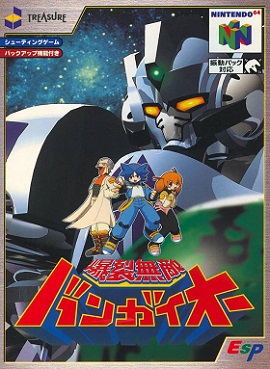
Bangai-O is a multidirectional shooter developed by Treasure and released in 1999 on the Nintendo 64 in Japan. It was ported to the Dreamcast worldwide shortly after with some gameplay changes and updated graphics and audio. The game places the player in control of a weaponized mech that can hover across large stages and fire at enemies all around them. The player must reach the end of each stage and defeat the boss, while avoiding hazards scattered across the map such as enemy mechs and gun turrets.

Ikaruga is a shoot 'em up developed by Treasure. It is the spiritual sequel to Radiant Silvergun (1998) and was originally released in Japanese arcades in December 2001. The story follows a rebel pilot named Shinra as he battles an enemy nation using a specially designed fighter called the Ikaruga which can flip between two polarities, black and white. This polarity mechanism is the game's key feature and the foundation for its stage and enemy design. All enemies and bullets in the game are either black or white. Bullets which are the same color as the player are absorbed while the others will kill the player. The game features both single-player and cooperative modes.
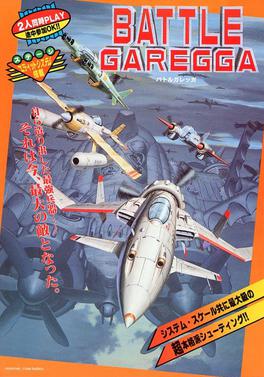
Battle Garegga is a vertically scrolling shoot'em up arcade game developed by Raizing and published by Eighting in 1996. It was later ported to the Sega Saturn in 1998, and an updated version, Battle Garegga Rev.2016 was released in 2016.

Border Down is a horizontally scrolling shooter video game developed and published by G.rev. It was released in Japanese arcades in April 2003 on Sega NAOMI hardware, and was ported to the Dreamcast later that year. The story takes place in the future where humans are defending their Mars colony from an invading alien attack. The game employs a "border system" where each stage has three variations of different difficulty. The player starts on the easiest variation, and is lowered to a more difficult variation with each subsequent loss of a life.

Time Crisis II is a 1997 light gun arcade video game developed and published by Namco. It is the second installment in the Time Crisis series. The game incorporates the same mechanics of its predecessor, with some minor changes, but with the addition of co-operative two-player gaming. The game's story focuses on the efforts of two secret agents, Keith Martin and Robert Baxter, as they attempt to thwart the efforts of a industry mogul's plan for world dominance.
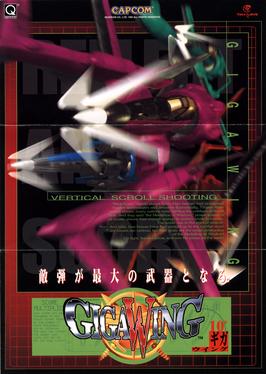
Giga Wing is a 1999 vertically scrolling shooter arcade game developed by Takumi Corporation and published by Capcom on their CPS-2 arcade system board and ported later that year to the Dreamcast console. The arcade version is notable for using a horizontally aligned monitor, something that is considered rare for a vertical shooter. The Dreamcast version had been scheduled to be released in the U.S. in April 2000, before it was delayed to July 18, 2000.
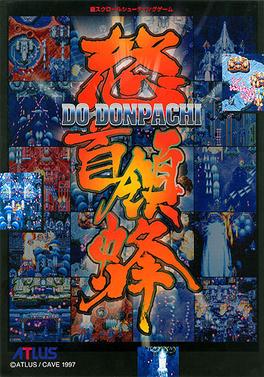
DoDonPachi is a vertically-scrolling bullet hell shoot' em up developed by Cave and published by Atlus in 1997. It was the second game developed by Cave, and the sixth on Cave's first-generation arcade hardware. As with its predecessor DonPachi, the title is both a Japanese term for expressing the sound of gunfire, and a term that relates to bees. The sequel to this game is DoDonPachi II, which was made by a different developer. The original developer later released its own sequel, DoDonPachi DaiOuJou.

Twinkle Star Sprites is a 1996 competitive scrolling shooter arcade game originally created by ADK. It was ADK's last production for the Neo Geo platform. The gameplay, which can be characterized as a combination of a fixed shooter and a versus puzzle game, uses combinations of shots, as well as timed power-ups to attempt to damage the opponent. These attacks also serve as counters to the opponent's attack.

Jackal, also distributed under the title of Top Gunner, is an overhead run and gun video game by Konami released for arcades in 1986. The player must maneuver an armed jeep in order to rescue prisoners of war (POWs) trapped in enemy territory.

Gunbird 2 is a 2D scrolling shooter developed by Psikyo and published by Capcom as a sequel to the original Gunbird. It was originally released in Japanese arcades in 1998, and was later ported to the Dreamcast in 2000 and released worldwide. An Android version was released in Korea in 2014, before it came out worldwide on both Android and iOS in 2016. The arcade game was also included in Gunbird Special Edition for the PlayStation 2. A version was released on Nintendo Switch in June 2018.

Yokai Dochuki, also known as Shadowland, is a 1987 platform arcade game developed and released by Namco in Japan and other parts of Asia. The player controls a young boy named Tarosuke as he must make his way through Jigoku, the Japanese concept of Hell, to reach Buddha, who will determine his fate. Tarosuke can fire small "ki" bullets at enemies to defeat them; he can also charge them to increase their power. Enemies will drop money when defeated, which can be used to purchase weapons and other items in stores. Two versions of the arcade original were released: a Japanese version and an English version which was released in other Asian countries outside Japan. The Arcade Archives release includes both versions.
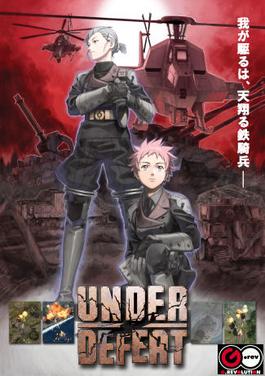
Under Defeat is a shoot 'em up video game developed by G.rev and released in Japanese arcades in 2005. The game takes place in an alternate reality during World War II, where players control German-speaking characters fighting against English-speaking characters. Their vehicles are patterned after those of real-life Allied and Axis powers. A port for the Dreamcast was released in 2006 and marketed as the last game for the system, although two more were released the following year. The game was commercially successful, but received average reviews from critics because of its traditional and derivative gameplay.

Mars Matrix: Hyper Solid Shooting, or simply Mars Matrix, is a vertically scrolling shooter arcade game developed by Takumi and released in 2000. The game was published by Capcom and run on their CPS-2 arcade system board. Mars Matrix was later ported to the Dreamcast video game console in 2001. The arcade version uses a horizontally aligned monitor, despite being a vertically scrolling game.
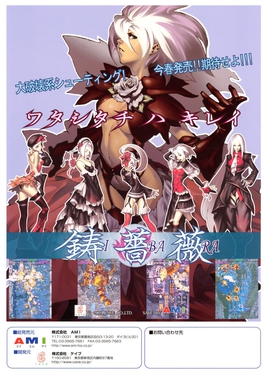
Ibara (鋳薔薇) is a 2005 vertically scrolling shooter developed by Japanese developer Cave and published by Taito. It was ported to the PlayStation 2 in 2006.
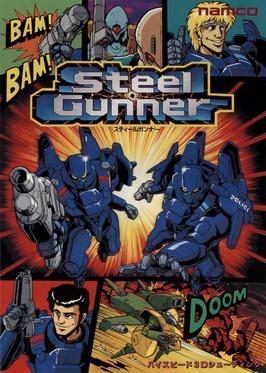
Steel Gunner is a 1990 first-person shooter arcade game developed and published by Namco. Players take control of Garcia and Cliff, a duo of police officers that are part of the Neo Arc police force, as they must use their powerful Gargoyle mecha suits to destroy the STURM terrorist organization, who have taken captive scientists Dr. Ryan and Dr. Ellis to create a world-ending superweapon. Gameplay revolves around using a crosshair to shoot down enemies and avoid harming civilians. It runs on the Namco System 2 Plus arcade hardware.
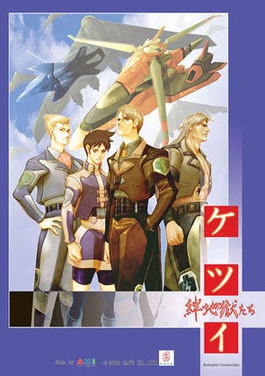
Ketsui: Kizuna Jigoku Tachi is a vertical shoot 'em up arcade game by Cave. It was released in Japanese arcades in 2003. A Nintendo DS boss rush version was released on October 23, 2008 in Japan. It included a Superplay DVD featuring a world record scoring run by a top ranked player. The arcade game was ported to the Xbox 360 and released in 2010. A special version of Dodonpachi Daifukkatsu Black Label was released on the Xbox 360 in 2011, which is a crossover with Ketsui, featuring the ship, re-arranged music and scoring system from Ketsui on top of the Dodonpachi Daifukkatsu Black Label scoring system.

Contra III: The Alien Wars is a 1992 run and gun video game developed and published by Konami for the Super Nintendo Entertainment System (SNES). It is the third home console entry in the Contra series after Contra (1988) and Super C (1990) for the Nintendo Entertainment System (NES). In PAL regions, it was retitled Super Probotector: Alien Rebels and the player characters were replaced with robots. The player is tasked with fighting off an alien invasion of Earth across six stages. Four stages feature side-scrolling action traditional to the series while two are presented from an overhead perspective. It is the first Contra title to have been directed by Nobuya Nakazato who later directed other games in the series. He designed Contra III to feature more comical elements, a more cinematic soundtrack, and tighter stage design than its predecessors.

Gunblade NY is a light gun rail shooter developed by Sega for the Model 2 arcade machine and was released in 1995 in North America and 1996 in Japan. The game was re-released alongside its sequel, L.A. Machineguns: Rage of the Machines for the Wii in 2010 as part of the Sega Arcade Hits Pack.

Chaos Field is a 2004 vertically scrolling shooter arcade video game developed by MileStone. The game consists entirely of boss battles, featuring five stages with three bosses each. The player can choose to play as one of three characters, each with their own ship that has a unique primary weapon. The player can flip the environment at will between two parallel worlds.
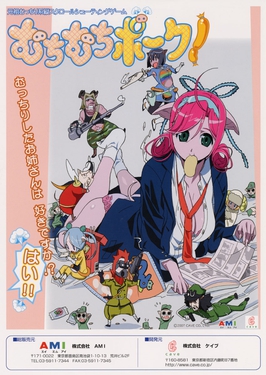
Muchi Muchi Pork! is a 2007 arcade bullet hell cute 'em up developed by CAVE, and published by AMI. It was also ported to the Xbox 360 as part of the Muchi Muchi Pork!/Pink Sweets compilation disc produced by CAVE in February of 2011.



















